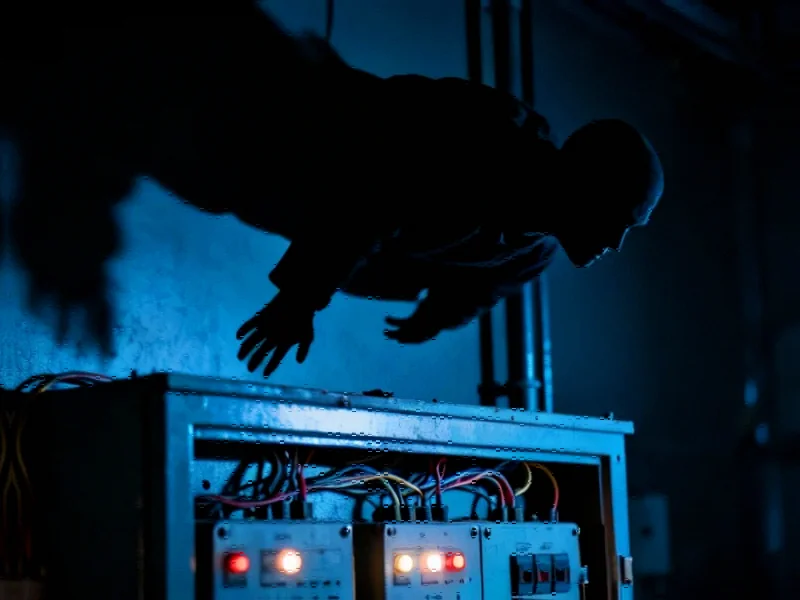Growing Cyber Threats Target Essential Services
As cyber adversaries increasingly focus on operational technology and industrial control systems, utility companies are sounding the alarm about a critical gap in their defense capabilities. The recent lapse of the Cybersecurity Information Sharing Act (CISA) has left energy providers operating in a more dangerous security environment, just as threat actors are developing increasingly sophisticated methods to compromise essential services.
“We’ve observed a consistent escalation in threat activity targeting critical infrastructure,” explained a senior cybersecurity expert, noting that adversaries are now specifically designing malware to exploit utility work environments. “These attackers infiltrate through internet-facing devices and remain undetected for extended periods, using legitimate network tools to perform reconnaissance and gather critical operational data.”
The “Living Off the Land” Threat Strategy
Cyber intruders have adopted sophisticated techniques that make detection increasingly challenging. The “living off the land” approach involves using legitimate network administration tools to mask malicious activity, allowing attackers to remain concealed while they map network infrastructure and gather sensitive operational data. This method enables them to understand utility environments thoroughly before launching targeted attacks.
Recent critical infrastructure cybersecurity assessments reveal that threat groups are developing operational technology-specific malware that leverages deep knowledge of utility systems. This specialized malware represents a significant evolution beyond conventional cyber threats, specifically designed to disrupt service delivery and cause widespread impact.
Regulatory Framework and Emerging Gaps
While existing regulations like the North American Electric Reliability Corporation’s Critical Infrastructure Protection standards have established important security baselines, the rapidly evolving threat landscape has exposed limitations in current frameworks. The security community has identified new threat groups developing ICS-specific malware that capitalizes on the extensive knowledge hackers can gain through prolonged reconnaissance.
Industry associations representing investor-owned utilities, natural gas providers, public power associations, and electrical manufacturers have united in calling for CISA reauthorization. They emphasize that the law’s expiration creates legal uncertainty that hampers effective information sharing about emerging threats and coordinated defense efforts.
Industry Calls for Legislative Action
In a September letter coordinated by the U.S. Chamber of Commerce, major energy sector organizations urged Congress to pass a “clean” CISA reauthorization. They warned that without the legal protections CISA provides, the nation faces a “more complex and dangerous security environment” at a time when electricity demand is growing rapidly and cyber threats are becoming more sophisticated.
The legislation provides crucial safeguards regarding public disclosure, regulatory compliance, and antitrust concerns that facilitate timely information exchange between public and private sectors. Industry leaders stress that these protections are essential for maintaining the trust required for effective collaboration between utility companies and government agencies.
Political Hurdles and Bipartisan Solutions
Despite broad support from Trump administration officials, lawmakers, and cybersecurity experts, Congress failed to reauthorize the program before its expiration. The stalemate resulted from efforts to add new restrictions related to combating online misinformation, highlighting the challenges of maintaining cybersecurity initiatives in a polarized political environment.
Bipartisan legislation introduced by Senators Gary Peters (D-Mich.) and Mike Rounds (R-S.D.) seeks to renew CISA for ten years with retroactive coverage to address the current gap. The proposal has garnered support from cybersecurity leaders who emphasize that threat intelligence sharing remains vital for protecting critical infrastructure from increasingly sophisticated attacks.
The Human Impact of Security Gaps
Security professionals within utility companies express deep concern about the practical implications of the lapsed legislation. “I need assurance that I won’t face penalties for sharing information that could enhance national security,” explained one utility security director. “Effective protection requires mutual trust – that we can share sensitive operational details and that the government will help safeguard that information.”
This sentiment echoes throughout the industry, where professionals are balancing the need for transparency with concerns about legal exposure. The current uncertainty comes at a particularly challenging time, as utilities face increasingly complex security challenges while managing growing energy demands and infrastructure modernization.
Looking Forward: Security in a Connected World
The situation highlights the critical intersection of cybersecurity, public safety, and legislative action. As utility systems become more interconnected and dependent on digital technologies, the need for robust public-private partnerships becomes increasingly urgent. Recent advancements in security technology offer promising tools for defense, but these innovations must be supported by appropriate legal frameworks to reach their full potential.
Industry leaders continue to advocate for CISA’s reinstatement, emphasizing that the law has proven effective in protecting privacy and civil liberties while enabling crucial information sharing. As one cybersecurity CEO noted, “These authorities have given private entities the guardrails and confidence needed for responsible cooperation with the federal government. Their renewal is essential for maintaining our national security posture in the face of evolving threats.”
The ongoing debate underscores a fundamental reality: in our increasingly digital world, the security of critical infrastructure depends not only on technological solutions but also on the legal and collaborative frameworks that enable their effective implementation.
This article aggregates information from publicly available sources. All trademarks and copyrights belong to their respective owners.
Note: Featured image is for illustrative purposes only and does not represent any specific product, service, or entity mentioned in this article.



